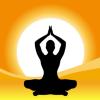CYBERMED LIFE - ORGANIC & NATURAL LIVING
CYBERMED LIFE - ORGANIC & NATURAL LIVING
 Yogic breathing, often referred to as pranayama, is a practice which is fundamental to the physical and mental practice of yoga. It is closely linked to the practice of asanas and, as such, yoga students aim to unite the mind, the body and the breath. The yogic breathing is often used as an anchor for concentration and mindfulness, as well as having physical and emotional benefits of its own.
Yogic breathing, often referred to as pranayama, is a practice which is fundamental to the physical and mental practice of yoga. It is closely linked to the practice of asanas and, as such, yoga students aim to unite the mind, the body and the breath. The yogic breathing is often used as an anchor for concentration and mindfulness, as well as having physical and emotional benefits of its own.
There are many breathing techniques that can be used for yogic breathing, which vary in complexity. Often, students begin by practicing a three-part breath to deepen their breathing and bring it under control. Then they may learn more advanced yogic breathing techniques, such as alternate nostril breathing or kapalabhati. All of these have their own unique benefits and effects on the body and mind.
Yogic breathing, or pranayama, is the fourth of the eight limbs of yoga as outlined in Patanjali’s Yoga Sutras.
It is said that yogic breathing is best learned under the guidance of a teacher, although some of the simpler techniques, such as lengthening the exhalation, can be practiced easily by one's self.
Yogic breathing has the potential to transform one's state of mind. It is said to reduce anxiety and stress, cure insomnia, ease pain and increase concentration. On a spiritual level, it can help people to connect with their inner calm and peace, helping to still the mind, and allowing them to access greater wisdom and clarity.
Yogic breathing can help students break their habitual and unconscious breathing patterns, turning them into something more calming and smooth. In particular, yogi breathing that emphasizes a longer exhalation is thought to help induce the body’s relaxation response by activating the parasympathetic nervous system. This reduces stress and improves resilience.